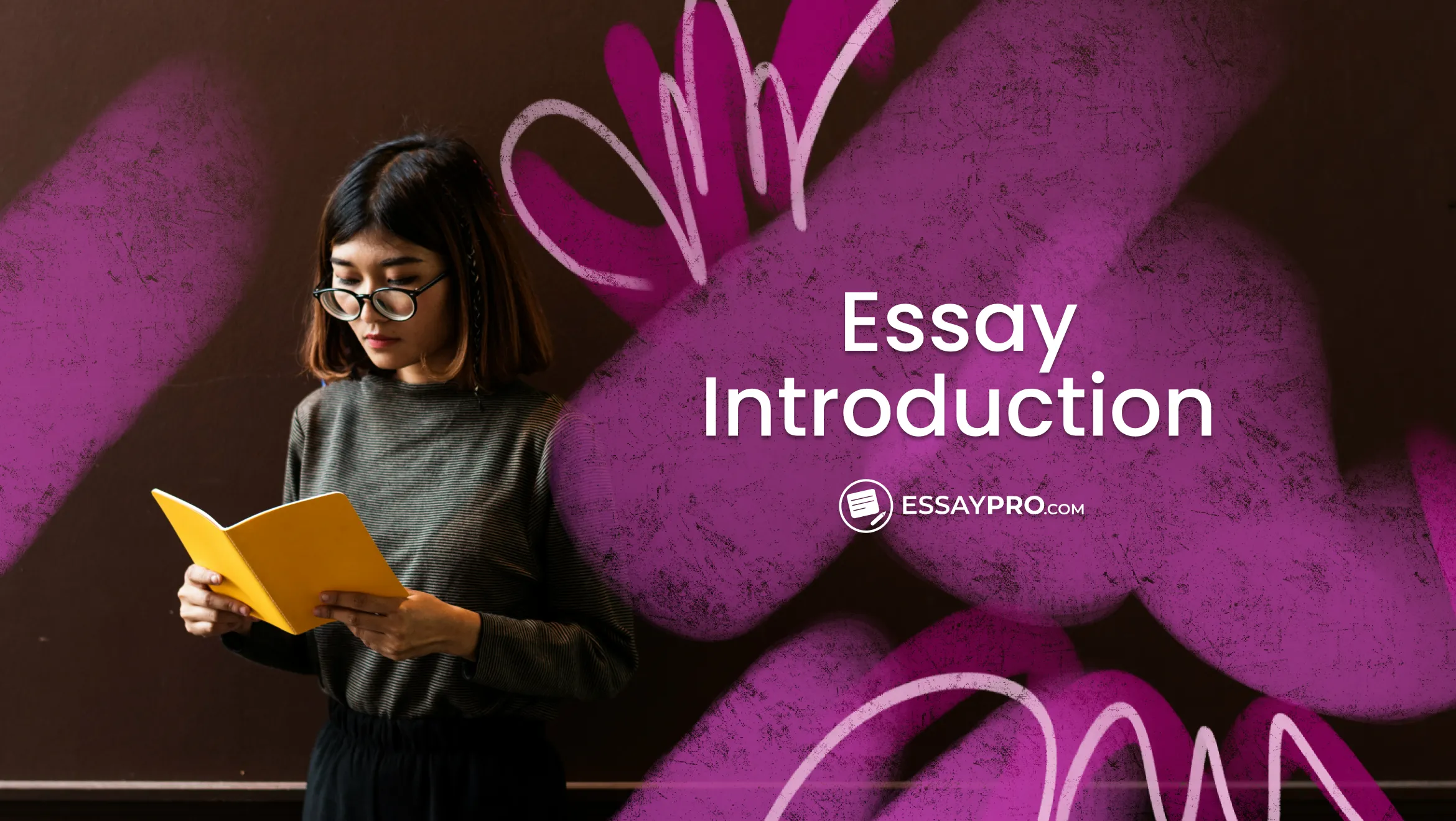An autobiography is a story a person writes about their own life. It covers experiences, major events, memories, challenges, and moments that shaped who they are. Students often struggle with where to begin. A whole life feels enormous on the page, and choosing the first moment or the first sentence can feel overwhelming.
This blog post explains how to write autobiography with simple steps, a clear outline, and practical tips that help you kick-start the writing process with less stress. And if the page feels crowded with details or you’re unsure which memories belong in the story, EssayPro’s essay writers can help you shape the structure.
💬 Self-Introduction Block?
Jump into our EssayPro Community and find answers from real students. Jump into our EssayPro Community, we’ve got more real student stories like this inside. Sometimes, hearing how others overcame struggles can be more powerful than another tip list.
What Is an Autobiography
Different forms of life writing share common ground, yet each one carries its own purpose and perspective.
- Autobiography: An autobiography is a written account of a person’s life, shaped by the individual who lived the experiences. The voice comes directly from the writer, which gives the story an intimate tone that other forms of life writing rarely reach.
- Biography: A biography depends on an outside writer who studies the subject and retells the person’s life from a researcher’s distance. Many memoirs focus on selected moments instead of the entire life. When writing a memoir, authors often choose emotional turning points, personal lessons, or short periods that carry strong meaning.
- Memoir: A memoir narrows the focus. Instead of covering an entire life, it centers on selected moments that shaped the writer in meaningful ways. Memoirists often use emotional turning points, personal lessons, or short periods of intense change to explore a central theme.
Many students approach autobiography writing the same way they approach a reflective essay. Both forms ask you to make sense of what certain experiences meant and see how they influenced the person you are now.


Autobiography Format
Students often pick a direction that reflects the strongest theme running through their life story. Here are a few possible goals:
- Overcoming difficulties: A story built around challenge and growth, where the writer shows how effort shaped the next stage of their life.
- Building your own path: A focus on choices that created a new direction, especially when the writer had limited guidance or support.
- A moment that changed everything: A major life event that redirected the writer’s thinking or influenced future generations.
Once the main goal is clear, the autobiography writing format follows a chronological order. The story starts with early memories and moves forward through different stages of life. This order helps readers understand how each moment leads into the next.
If the planning stage feels heavy, students can get support through term paper writing services at EssayPro.
Types of Autobiographical Writing
In the following table, you’ll discover literary forms commonly found in autobiographical works:
Autobiography Examples
If you’re ready to explore autobiography examples, EssayPro offers a section where we'll check out four outstanding examples. Get ready to be inspired and maybe even think about telling your own story down the line. Let's dive in!
Autobiography Example 1: 'Wanderer's Odyssey: The Uncharted Life of Alex Sterling'
This autobiography follows a city-raised character who leaves home to travel the road and see what life offers. The journey brings new people, hard lessons, and a clearer sense of self. The epilogue looks back on a life shaped by resilience and honest choices.
Autobiography Example 2: 'Echoes of Eternity: The Memoirs of Amelia Reed'
This autobiography follows a character who leaves a quiet village to chase bigger dreams. The journey brings challenges, growth, and a final reflection on how those choices shaped a meaningful life. You can also look at our narrative essay topics for a few ideas.
Autobiography Example 3: 'Letters to My Own Future: The Life of Mara Ellison'
This autobiography follows Mara Ellison through the early habits, pressures, and small turning points that shaped her sense of direction. The story shows how a childhood filled with crowded rooms, shifting dreams, and quiet observation developed into an adult life built on reflection and steady responsibility.
Autobiography Example 4: 'The Path That Took Shape Slowly by Daniel Hart'
This autobiography follows Daniel Hart as he moves through ordinary spaces that gradually shape his identity. The story traces quiet responsibilities in childhood, the first serious interest in art, and the slow discovery of a career that fits the way he thinks.
Outline for Autobiography
The list below shows the core pieces every strong autobiography outline includes and what each one should explain.
- Preface / Introduction: State your core message and why the story matters.
- Early Years: Share your birthplace, background, and key family memories or family history.
- Adolescence / Teenage Years: Describe school years, relationships with friends and close family members, interests, early challenges, your role model, etc.
- Significant Events: Highlight moments that shifted your direction or mindset.
- Adulthood and Career Path: Explain education, work steps, relationships, and major milestones.
- Challenges and Lessons Learned: Note meaningful struggles and what each taught you.
- Present Day: Show where you are now and what guides you.
- Conclusion / Reflection: Name the main takeaway you want readers to remember.
If the outlining stage feels heavy, you can buy an essay from a professional who can help shape your autobiography outline or refine your draft.
How to Write an Autobiography with a Template
Download a free autobiography template and later save it as a PDF if you want a clean document to work with offline.
Writing Techniques to Use in an Autobiography Video
When you write an autobiography, the process involves employing various techniques to make the narrative engaging, evocative, and compelling. Here are some tips for writing autobiography commonly used in autobiographies:
Here are some tips for writing your autobiography commonly used by successful authors:
- Use concrete details: Describe what you saw, heard, or felt so the reader can picture the moment without you overexplaining it.
- Add small bits of dialogue: Let short lines of speech show how people sounded and what the situation felt like.
- Show moments through action: The best way to convey emotions is to let the reader catch them through what you did or how someone reacted.
- Shift in time when needed: A quick flashback or hint of what is coming can help the story land with more meaning.
- Use simple comparisons: A clean metaphor or simile can make complicated feelings easier to grasp.
- Keep a bit of humor: A small joke or honest admission can make the writing feel alive.
- Hold some details for later: A touch of suspense keeps the reader leaning forward without turning your story into fiction.
If your draft feels flat or you want help strengthening the voice, you can simply say 'edit my essay' and a writer from EssayPro will add stylistic and creative touches to increase its scholarly value.
Tips for Writing an Autobiography
Here are experience-based autobiography writing tips that help students actually write better stories:
- Track the moments you avoided telling for years. If you feel a slight discomfort writing it down, that is often a sign of importance.
- Write toward the question you never solved. Most people write what they already understand. More honest writing comes from chasing the parts of your life that still puzzle you.
- Notice patterns in your choices. You might switch cities, jobs, or relationships, yet the same habit repeats. Mapping that pattern gives your autobiography insight.
- Use small moments to explain big changes. A comment from a teacher, a bus ride home, a morning when something just felt different.
- Revisit the version of yourself you were at each age. Instead of describing a specific event from today’s perspective, try writing a few lines as if you were that age again.
- Let contradictions exist. You can be confident in one setting and unsure in another. Naming these shifts makes you appear genuine.
- Ask someone close to you what they remember differently. The gap between your memory and theirs often reveals a deeper truth or a missing piece worth including.
If your draft feels too long or scattered, you can use an essay shortener to tighten sections before you revise.
Final Words
A strong autobiography comes together when you know what to focus on and how to shape your experiences with intention. Here’s how to write an autobiography about yourself, briefly summed up:
- Trace how your experiences connect to the world around you and how they have changed you in lasting ways.
- Focus on specific memories instead of general descriptions of your past.
- Reflect on the lessons behind each stage of your life.
- Revise with attention to clarity, pacing, and emotional honesty.
If writing a full paper still feels heavy or you want expert help shaping your story, you can use our research paper services for additional support. Our writers can handle any academic task and help you produce confident work without added stress.
FAQs
How to Write an Autobiography?
To write an autobiography, pick the moments that shaped you and outline them in a simple order. Start with a brief introduction, then describe the key events and people who influenced your growth. Stay honest and reflective as you explain how those experiences formed who you are.
What is the Difference Between Autobiography and Biography?
Autobiography and biography both tell a person’s long, interesting life story, but they do it from different angles. An autobiography is written by the person who lived the life, while a biography is written by someone else.
How Do I Start an Autobiography About Myself?
Start your autobiography by introducing who you are, where your story begins, and the moment or memory that shaped you early on. Keep it simple: give a clear starting point, explain why it matters, and then move into the next parts of your life step by step.
What Should You Not Include in an Autobiography?
Avoid anything irrelevant that does not support your main story, is overly private, or untrue. Skip anything exaggerated or inaccurate, since an autobiography depends on honesty. Keep your focus on meaningful experiences instead of filler.
Can a Normal Person Write an Autobiography?
Yes, anyone can write an autobiography. You do not need to be famous or have an extraordinary life for your story to be worth telling. A clear timeline, meaningful moments, and honest reflection are enough to create a strong narrative.

Adam Jason
is an expert in nursing and healthcare, with a strong background in history, law, and literature. Holding advanced degrees in nursing and public health, his analytical approach and comprehensive knowledge help students navigate complex topics. On EssayPro blog, Adam provides insightful articles on everything from historical analysis to the intricacies of healthcare policies. In his downtime, he enjoys historical documentaries and volunteering at local clinics.
- CCBC Library Guides. (n.d.). Biography research guide. Retrieved from https://libraryguides.ccbcmd.edu/bio
- “Autobiography | Literature.” (n.d.). In Encyclopædia Britannica. Retrieved from https://www.britannica.com/art/autobiography-literature
- Southern Connecticut State University. (n.d.). Biography research guide. Retrieved from https://libguides.southernct.edu/biography






